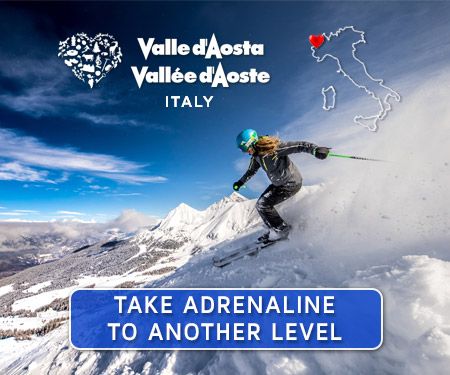Ranked
3rd
of 235 ski resorts
Overall Rating
4.68
From 38 Reviews
43
Total Runs
1324
Bottom Elevation
2778
Top Elevation
130
Skiable Terrain
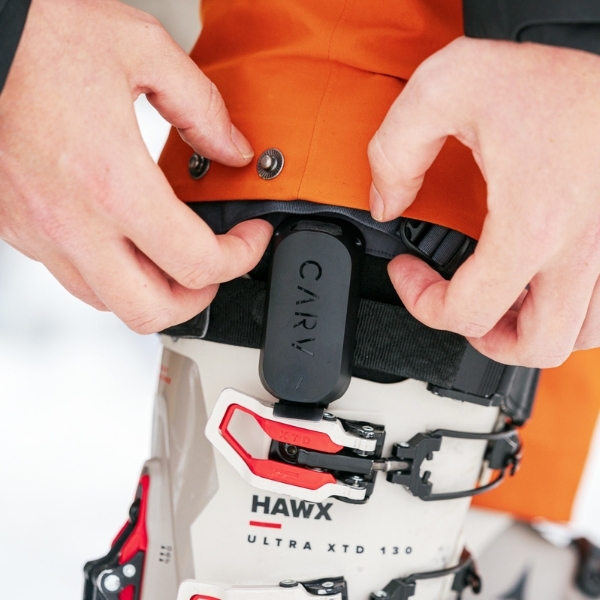
Sponsored Partner
Unlock Challenging Slopes in Alta Badia
Level up your ski technique, master more of the mountain and have more fun on the snow with Carv! Carv 2 clips to your boot, helping you to improve on every terrain type. Get real-time audio coaching as you ski, as boot sensors detect your movement.
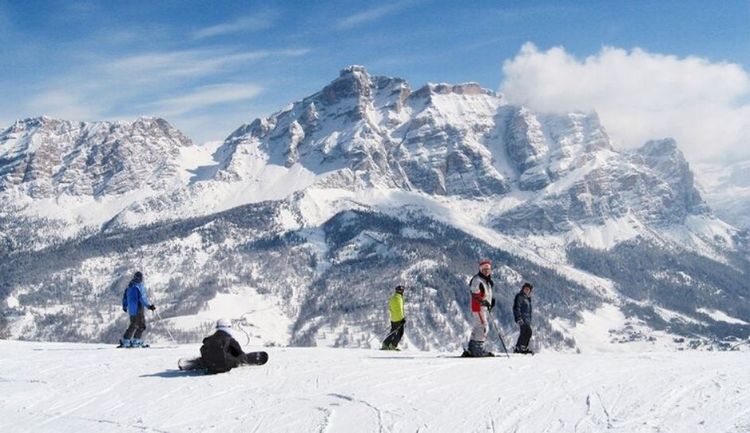
Alta Badia Overview
A ski resort in the Italian Dolomites, Alta Badia sits up high in South Tyrol’s Val Badia. It is in the heart of the Ladin Dolomites, where the ancient Ladin culture (with pre-Roman Empire origins in the area) thrives to this day. Steeped in history, culture and seriously stunning scenery, Alta Badia is known for its wide open spaces, lush forests, clean air, and above all, unrivalled local hospitality.
The Alta Badia ski resort is based over the six villages of Corvara, Badia, Colfosco, La Val, San Cassiano and La Villa - each of them offers something different, but you can find out about the best places to stay in the ‘accommodation’ section below. Part of the Dolomiti Superski network, you’ll enjoy a huge area lift pass which includes the Sella Ronda circuit, Hidden Valley run, Marmolada glacier, and other linked resorts like Cortina d'Ampezzo. Locally though, the ski area’s 53 ski lifts and 130 km of perfectly groomed slopes are more than enough to keep beginners and learners happy. The area is also covered by the IKON pass and is much cheaper in terms of food and accommodation when compared to resorts across the pond.
Ultimately, Alta Badia has the three S’s of any great ski resort - sun, spritz and snow.
"great access to wide choice of quality off-piste terrain and routes. good value for money. good italia ambience."
"10/10 would recommend - quite slopes and some very long runs (12km!) some of the most beautiful scenery I have ever skied in alongside a fantastic choice of places to eat/drink."
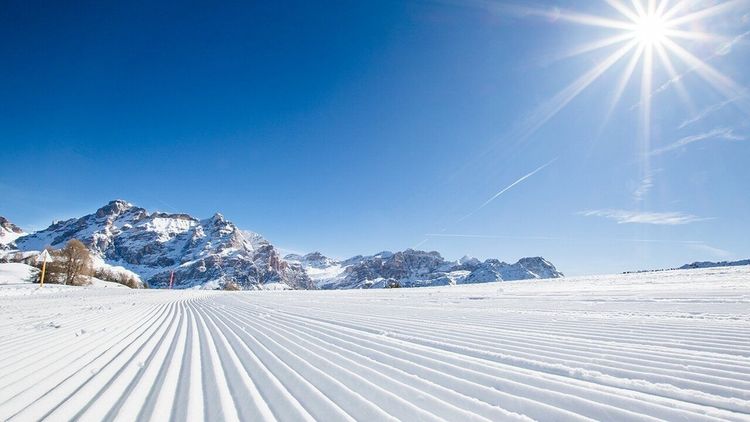
The Skiing in Alta Badia
Ranging from 1324m to 2778m, Alta Badia boasts some of the most consistent snow in Europe and beautiful scenery to accompany it. Slopes can get busy at peak times but the colossal ski area means crowds disperse pretty quickly after the first-lift rush. The area is one of the biggest in Europe when you get the Dolomiti Superski pass, which covers 12 interconnected ski resorts in the Dolomites, spanning across 1,200 km of slopes and 450 ski lifts - it’s safe to say you won’t need to ski the same slope twice if you don’t want to. Highlights include the Sellaronda, a 42km / 22-mile round tour with insane panoramic views. The tour has different route options with friendly enough slopes that a confident intermediate can tick it off their list, and plenty of places to stop for food and drinks.
Described by the Snomad community as an ‘intermediate paradise,’ there’s a nice balance of both steeper reds and cruisey blues in the Alta Badia area. A particular highlight is the almost endless amount of blue runs above Corvara, including the 9A run which drops down from Pralongia at 2157m to the base station of the Piz Sorega cable car. For those that didn’t already know, you don’t tend to find green slopes in Italy, so the blue pistes are where beginners will feel most comfortable. There are family fun zones littered all over the area and a snowpark beneath the Ciampai lift.
On the whole, the vertical may not be huge but there are so many runs to explore and if you ski all the way back down to the valley (like the 9A piste down to San Cassiano mentioned above) you’ll clock up more mileage - not to mention taking advantage of the Dolomiti Superski pass.
For advanced riding and freeride, the abrupt geology of the Dolomites limits off-piste somewhat. However, there are numerous terrain parks and Alta Badia’s World Cup run (piste 17) is tough.
"Intermediate paradise, huge area lift pass, can do Sella Ronda circuit, Hidden Valley run, Marmolada glacier, and other linked resorts like Cortina d'Ampezzo. Great value and variety!"
Ranked Highly For

Overall Rating
3rd of 235 worldwide
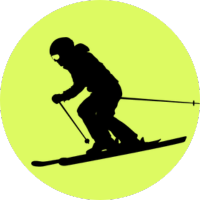
Intermediates
4th of 120 worldwide
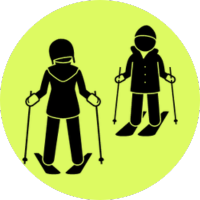
Ski School Quality
5th of 194 worldwide

Eating Out
10th of 239 worldwide
Eating Out in Alta Badia
The Alta Badia Valley has a reputation for truly exceptional food, with no fewer than six Michelin-starred restaurants - that’s more than all of Malaysia. Thanks to the rich Ladin culture and proximity to Austria, there is a great variety of cuisine. You’ll find pork schnitzel sitting alongside homemade ravioli on menus that promise an unforgettable experience.
If you’re here to sample some mind-blowing chef Savoir-faire, the Michelin-starred restaurants include St Hubertus in the Rosa Alpina Hotel in San Cassiano, La Stau de Michil at the La Perla Hotel in Corvara and La Siriola in Armentarola (San Cassiano). It goes without saying that the price tags are reflective of the cuisine, but you really do get what you pay for. Other fine dining options without the intimidating Michelin status include the Sporthotel Panorama near the Arlara lift at the top of Corvara, which is loved by the Snomad community for its afternoon cakes, extensive wine list and six-course evening meals.
If you’re visiting on a budget, you can rely on the staple Italian classics - all villages have pizzerias serving reasonably-priced pizza and pasta dishes.
"There's no shortage of restaurants on the hills, and reasonably priced (It's not France). They get busy, so I'd recommend booking if your a group."
"Typically we eat lunch out and there are plenty of options on the slopes. A great place to explore or start a ski adventure."
The Après-Ski in Alta Badia
The vibe throughout Alta Badia is very much understated family fun, but there are some decent après spots both on and off the mountain for those who want to sip on sundowners to thumping Europop. On the slopes, Club Moritzino at the top of the Bamby and Piz La Ila lifts has sun-soaked views and occasional dancing on tables from lunchtime onwards. In the event that you après up here until after the lifts have closed, you can ski down to La Villa (preferably not on the seriously steep black run) and then take a bus to the other villages.
Elsewhere, Edelweiss mountain hut above Colfosco (top of the Pradat cable car) has a similar but more chilled-out vibe should you want to simply sit back and soak in the views. At resort level, Corvara is the liveliest village and so L’Murin is where you’ll find the returning après crowd, despite it being part of a luxury hotel.
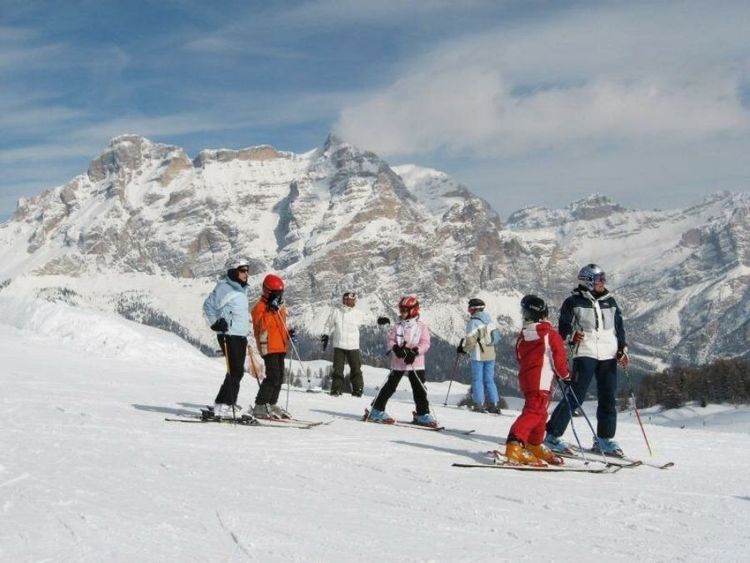
Alta Badia for Families
The villages of Alta Badia retain their traditional charm, which means there isn’t heaps to do off the slopes other than the usual selection of ice skating and tobogganing.
Corvara is home to a handful of hotels with luxury spas that often open their doors to non-residents along with indoor tennis courts, a climbing wall and an ice rink. San Cassiano has arguably the best foodie scene in Italy outside of Bologna, and there’s a fantastic toboggan run which comes down into the village from Piz Sorrega.
For non-skiers who want to hone their fitness without any time on the slopes, winter walking is popular here, and when you see the scenery, you’ll understand why.
"Alta badia has a great selection of runs of all grades and it's excellent for families with a huge plateau of mostly blue runs behind corvara. The vibe is relaxed and you can normally avoid the crowds if you want to."
Accommodation in Alta Badia
Each of the six villages offers something different, but for maximum convenience and the best access to the ski area, we’d suggest either Corvara or La Villa.
Corvara (1568m) is bigger, busier and has a lively après scene. Known for luxury stays, nightlife and complete convenience, it is the most developed of all the Alta Badia villages It is also a favourite of the Snomad community, with frequent mentions of ski-in ski-out hotels in Corvara including Hotel La Perla, Sporthotel Panorama and Berghotel Ladinia. La Villa (1433m) is slightly smaller and quieter and is the place to go if you’re serious about getting those miles in. Not only is it home to the famous World Cup run, Gran Risa, but it’s also well connected to the Superski area. There is a decent choice of accommodation and prices are very reasonable.
Colfosco (1645m) is the best choice for families wanting a scenic break. It’s a beginner-friendly area in itself, but is also only two lifts away from the mass of blue slopes above Corvara. San Cassiano (1537m) is where you’ll find the high-end foodie and spa scene; The St. Hubertus hotel is one of only ten three-Michelin-starred restaurants in Italy. Keep in mind though that San Cassiano is a sprawling village along the bottom of the valley (you’ll see many non-skiers here just for the Michelin-starred restaurants) which means you will need to take a short bus to the main lift area. Hotel Fanes provides a shuttle service which takes you from door to ski lift in two minutes.
The final two other villages of Badia (1324m) and La Val (1348m) both also require shuttles to the main lift area, but the trade-off is peace, quiet and breathtaking scenery immersed in traditional Ladin culture. Badia is the best base for those not hitting the slopes, as it’s the starting point for things like snowshoeing and cultural excursions.
Environment and Sustainability in Alta Badia
Various sites across the Dolomites are on the UNESCO World Heritage list and the entire area is a recognized National Park, so environmental and sustainability practices are underway. Sustainability rangers can be found in all 12 Dolomiti Superski/ Supersummer resorts. Their task is to guard and spread the culture of ecological, social and economic sustainability.
The "DS Responsibility" project, established in 2018, is continuously seeking to develop strategies to reduce the carbon footprint of the destination, and there is a focus on reducing the impact of in-resort services, some of which are:
- Sustainable snowmaking with no added chemicals
- Use of GTL Fuel Alpin for their piste grooming fleet - GTL Fuel Alpin is an alternative fuel derived from natural gas, which burns cleaner than conventional diesel.
- Rechargeable ‘My Dolomiti’ lift pass card
- The ‘A Taste for Skiing’ initiative across selected mountain huts, where chefs create innovative cuisine that reduces food waste.
Pros & Cons of Alta Badia
Pros
- Huge area lift pass
- Access to the Sella Ronda
- Excellent lift infrastructure
- Can avoid the crowds - there's enough space for everyone
Cons
- Some mention that the piste signage is confusing
- Expensive to eat and drink
- Not so lively on the apres front
Recent Reviews
intermediate skier ⛷️ United Kingdom
Harry
Dec, 5 2025
Great food, great views, great piste conditions, all that is good with Italian skiing. And great value, too.
advanced skier ⛷️ United Kingdom
David
Nov, 25 2025
Best place to stay on the Sella Ronda for easy access to the whole of the Dolomiti Superski area. Wide variety of slopes, especially easier blues & reds for the less confident. Great hotels & food. Quieter nightlife.
intermediate skier ⛷️ United Kingdom
Andrea
Nov, 23 2025
My favourite area to ski. Stayed in Corvara which was ideally located to access the Sella Ronda in both directions as well as going off in other directions. As there is a choice of gondolas and lifts out of Corvara if one is queuing you can easily choose a different area. We were there two weeks and still didn’t get to all the areas our lift pass covered. Our hotel (Greif) was lovely and provided a shuttle to/from the lifts although it was walkable too. We were half board and food was good (South Tyrolean). Did not look to be that many options to eat out in the resort, but Mountain restaurants were also good. Highly recommend and definitely want to return.
Alta Badia Resort Stats
Ski Terrain
36Beginner Runs
7Advanced Runs
8.5 kmLongest Run
130 kmSkiable Terrain
Elevation
2778 mTop
1324 mBottom
1454 mVertical Drop
Lifts
12Gondolas / Cable Cars
30Chairlifts
11Surface Lifts
Lift Pass Costs
€645Season pass
€3386 days
€671 day
Weather
195 cmAverage annual snowfall
Alta Badia Travel Information
Airports
70min drive60KMsBolzano Dolomiti Airport (BZO)
160min drive150KMsInnsbruck Airport (INN)
200min drive180KMsVenice Marco Polo Airport (VCE)
Train Stations
45min drive40KMsBrunico/Bruneck
FAQs Skiers' Most Asked Questions
Alta Badia FAQs: Skiers' Most Asked Questions
Is Alta Badia snow-sure?
Alta Badia has solid snow reliability thanks to extensive snowmaking capabilities. One Snomad community member noted, "snow-making facilities are world class, which means that even early in the season/over Christmas, the snow conditions were brilliant." Another user mentioned the resort has "plenty of snow canons, and they made the most of them." While natural snowfall can vary, the resort's investment in snow production ensures consistently well-maintained pistes throughout the season.
What mountain range is Alta Badia part of?
Alta Badia is situated in the stunning Dolomites mountain range in northern Italy. This UNESCO World Heritage site is famous for its distinctive pale limestone peaks that create a dramatic backdrop for skiing. Many Snomad users specifically mention the breathtaking scenery, with Kate describing "spectacular scenery you expect from being in the Dolomites" and Katy noting it has "some of the most beautiful scenery I have ever skied in."
When does the ski season start and end in Alta Badia?
The ski season in Alta Badia typically runs from early December to mid-April, with the most reliable snow conditions from January to March. Our users note the resort's excellent snow-making facilities, which help ensure good coverage even early in the season. As one Snomad community member mentioned, "Even over Christmas, the snow conditions were brilliant" thanks to what they described as "world-class snow-making facilities."
ChatGPT: I'll create a 75-word answer about when the ski season typically starts and ends in Alta Badia, Italy. I'll use the templateTag for ratings and occasionally link to league tables.
The ski season in Alta Badia typically runs from early December to mid-April, with the best snow conditions from January to March. The resort's excellent snow-making facilities help ensure good coverage throughout the season. As Kate notes, "The region's snow-making facilities are world class, which means that even early in the season/over Christmas, the snow conditions were brilliant." Alta Badia scores impressively for 4.75/5 for lift efficiency.
Is Alta Badia good for beginners?
Absolutely perfect for beginners! Alta Badia earns a top score of 5.00/5 for beginners, with Snomad users praising its well-groomed slopes and gentle terrain. Sara, a beginner, mentions that "the runs were well groomed" and "lots of runs on the mountain were accessible." Another user, Elisia, learned to ski here and found "the runs are relatively easy with barely any queuing for lifts." The resort's family-friendly plateau behind Corvara offers plenty of blues for learning in comfort.
Is Alta Badia good for intermediate skiers?
Alta Badia is a paradise for intermediate skiers, with our Snomad users rating it 4.68/5 for intermediates. One user described it as "intermediate paradise with many beautiful long cruises." The resort offers a perfect balance of challenging reds where you can push yourself and cruisy blues for refining technique. With access to the Sella Ronda circuit and excellent lift efficiency, you'll find endless variety across well-maintained pistes. As Philip notes, it also offers "good value for money" with stunning scenery.
Is Alta Badia good for advanced skiers?
Alta Badia is excellent for advanced skiers, earning 4.64/5 for advanced skiers and 4.67/5 for experts. Our users rave about the "wide choice of quality off-piste terrain" with Philip highlighting great access to challenging routes. Mark, an advanced skier from the US, loves the Sella Ronda circuit, which offers more difficult descent options. Henry mentions impressive powder zones and tree lines, while Jakub praises the excellent early morning conditions. The World Cup Gran Risa piste provides a thrilling challenge for those seeking steep runs.
Is Alta Badia good for expert skiers?
Yes, Alta Badia is great for expert skiers, with a strong rating of 4.67/5 for experts. One Snomad community member described it as having "great access to wide choice of quality off-piste terrain and routes." The World Cup Gran Risa piste offers a challenging black run, and there's access to glacier skiing nearby. While primarily known for cruisy intermediates, experts will find plenty to enjoy when venturing beyond the main slopes.
Is Alta Badia good for non-skiers?
Alta Badia offers plenty for non-skiers. One Snomad user mentions "lots of activities for non skiers" available throughout the area. The stunning Dolomite scenery provides a gorgeous backdrop for winter walks, and the resort's Italian-Austrian cultural blend creates a unique atmosphere. With excellent mountain restaurants serving authentic cuisine and sun terraces perfect for relaxing, non-skiers can enjoy the Alpine ambiance while others hit the slopes. The resort's multiple villages offer shopping, cafés and local cultural experiences.
Is there snow at Christmas in Alta Badia?
Yes, Alta Badia typically has good snow at Christmas. One Snomad community member noted that "even early in the season/over Christmas, the snow conditions were brilliant" thanks to world-class snow-making facilities. Another skier mentioned that while there might be occasional shortages of fresh snowfall, the slopes are managed and pisted superbly with plenty of snow cannons ensuring coverage. The resort is generally considered snow-sure, particularly at higher elevations.
Where should I stay in Alta Badia and what type of accommodation is available?
Alta Badia offers several charming villages to base yourself. Corvara is the main hub with excellent lift access and amenities. La Villa offers a more relaxed atmosphere with good family options. Colfosco has ski-in/ski-out lodging with stunning views, while San Cassiano provides a more upmarket experience with boutique hotels. Accommodation ranges from traditional family-run guest houses to luxury spa hotels, with most offering half-board options. Our users highlight the high-quality, well-located lodging across the area.
What's the best way to get to Alta Badia?
International travellers can reach Alta Badia by flying into one of several nearby airports. Innsbruck (Austria) is closest at about 2 hours' drive, while Venice Marco Polo, Verona, and Milan airports are all viable options (2.5-3.5 hours away). From these airports, you can arrange private transfers, take public buses, or hire a car. Some Snomad users recommend flying into Venice for better flight options, followed by a scenic drive through the stunning Dolomites.






